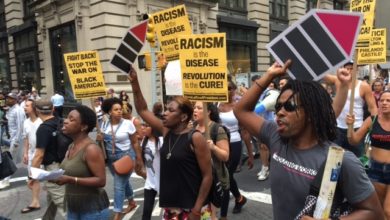Nationwide demonstrations continue to expand in both numbers and demands—linking to workers’ demand for a $15 minimum wage and standing in solidarity with students. Demonstrations have forced the resignation of a racist president at the University of Missouri. Other college presidents in New York and California have received similar messages from mobilized students.
The #MillionStudentMarch Nov. 12 demanded the cancellation of student loan debt, free college tuition, and a $15 minimum wage for workers—issues that affect all working-class people.
The fact that students all over the nation took to the streets to demand equality, both economic and social, is no coincidence. When we look at the conditions that sparked this nascent movement and the history of student movements around the world, we see that it was long overdue.
Adjusted for inflation using 2015 dollars, the annual cost of college tuition from 1975 to 2015 has risen by more than $11,000 per year, while average student loan debt has reached $30,000, according to data by the National Center for Education Statistics. This data doesn’t include things like child care, health care, housing, and food, which have also sharply risen, making life even more difficult for the average working-class student.
When working-class people are pushed into a corner and all means have been exhausted, we must fight back, and that is exactly what students are doing today and have done many times in the past. From the protests of students in Mexico City in 1968 to the Athens Polytechnic uprising in 1973, 1996 Quebec student protests , 2011 Chilean student protests, and so on, students have been involved in the pursuit of social justice across the world from the very beginning. Today, we see that same fire in the eyes of the students here at home.
A proud history of struggle
In the U.S., there is a proud history of student rebellions, one of them being the East LA walkouts of 1968 directed at the inequalities of the LA public school system. Even more recent in memory are the 1995 high school students in New York who took to the streets to protest budget cuts proposed by then Gov. George E. Pataki and New York City Mayor Rudy Giuliani.
Today, these issues are still being confronted by students and the community alike. This past month, students, staff and communities continued the protests and demands that have been standing issues for generations. The emerging Million Student March movement is not going to take no for an answer.
The surge of student protests that have struck more than a hundred schools nationwide expresses the idea that education is a human right. This fundamental idea is nothing new, and at many of these universities it has been years in the making. Students the world over have been shouting that education is a human right and should be free of charge. But the ruling class is steadfast in keeping its grip on profit-making off higher education.
The ruling class today wants education completely privatized to commodify it and facilitate the expansion of profit-making into another market. We see it today with the struggles being waged against public school closures that are affecting the most vulnerable, particularly working-class and poor communities of color that have been historically marginalized.
As the protests go from a roaring boil to a simmer, it’s important to keep up the fight for education as a universal human right.






